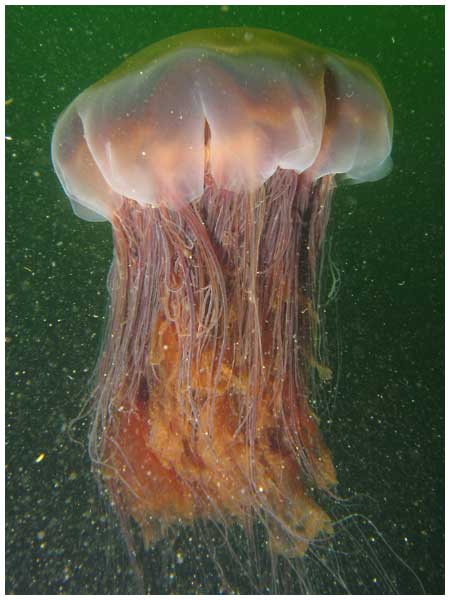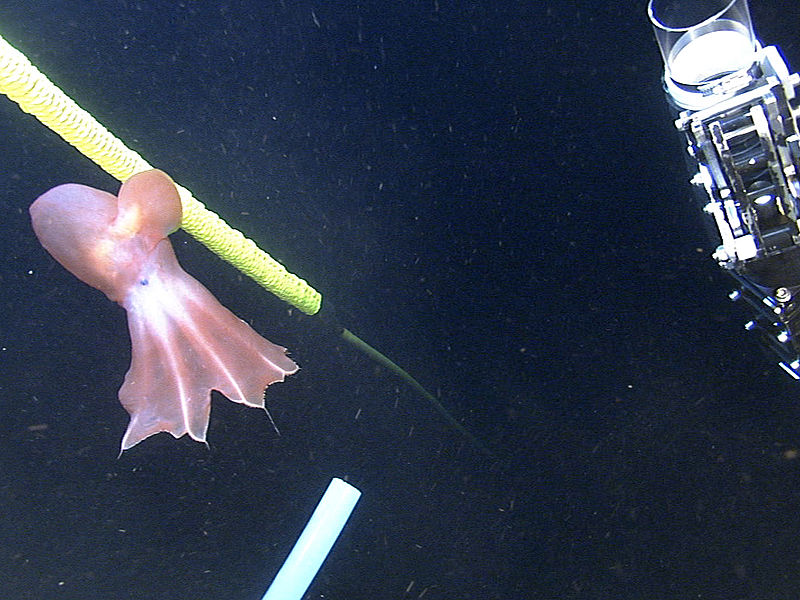Before I get into the 'bio' aspect of this article I want to put it in context by pointing to a means of ocean mixing that is not as well known as it deserves to be. And to put that, in turn, in context: a new report from NSIDC confirms that there is a lot of open water in the central pack near the North Pole. That open water was noted by one of my readers, Lord Soth in a comment.
Here is an abstract from the NSIDC report for July 20 2010:
While we normally report on the extent of area covered by at least fifteen percent sea ice, a more reliable measurement, it is also valuable to look at ice concentration values, which can reveal conditions in more detail. However, it can be difficult to interpret AMSR-E concentration data during the summer, because microwave signals associated with low ice concentration look very much like signals associated with surface melt. Weather effects can also cause false concentration signals.[My emphasis]
By comparing AMSR-E data with data from other satellites, we can determine which areas of apparent low-concentration ice are real, and which appear to be low because of melt or atmospheric effects. Visible-band images from the NASA Moderate Resolution Imaging Spectroradiometer (MODIS) sensor show that some of the areas of apparent low ice concentration within the central pack ice are actually melt and atmospheric effects. However, the MODIS data also confirm that there are substantial areas of open water within the pack ice, such as near the North Pole and in the Beaufort Sea.
http://nsidc.org/arcticseaicenews/2010/072010.html
It is fairly obvious that open water in the pack will absorb heat. Less obvious is the fact that any significant area of open water can promote mixing and currents through Ekman transport.
I suggest that Ekman transport is sending surface water under the ice where it promotes bottom melting. This would be yet another feedback mechanism. It would accelerate ice loss through thinning, showing up as faster than expected thinning - i.e. volume loss - in the central pack.
Biotransport and ocean mixing
Even less well known than Ekman transport is biotransport. Maybe that's because the term has never to my knowledge been applied to ocean mixing.
Biotransport is the transport of energy, mass, and momentum as an essential function of living things. Biotransport can be observed from the smallest to the largest scales of organs and organisms.
When a jellyfish swims it carries some water with it. A study published last year shows that the amount of water transported and mixed by jellyfish is substantial.
Until now, oceanographers had dismissed the idea that such tiny ocean creatures could play a role in mixing various layers of ocean water on a large scale. The argument was based on evidence that any swishing from fish tails, say, would get dampened by the ocean's viscosity (a measure of a fluid's resistance to flow — honey has a high viscosity compared with water).
But the new study, which is published in the July 30 issue of the journal Nature, reveals a mixing mechanism first described by Charles Darwin's grandson that is actually enhanced by the ocean's viscosity, making these tiny sea critters major players in ocean mixing.
http://www.livescience.com/animals/090729-jellyfish-mixers.html
If 'tiny creatures' are major players, what if they were giant creatures? Like the Lion's mane jellyfish - the world's largest jellyfish. The largest of these largest jellyfish is found in the Arctic.

Lion's mane jellyfish
Courtesy Dan Hershman - http://www.flickr.com/photos/hershman/
If jellyfish can have such effects, what about cephalopods ?
Finned octopods, known technically as cirrates, are sometimes called "Dumbos" because the large fins make them look like flying cartoon elephants flapping their ears. They are among the largest organisms of the deep sea. The species seen in the Canada Basin can grow to 1.5 m in length. Because they are difficult to collect, their biology and ecology are poorly known.
http://oceanexplorer.noaa.gov/explorations/05arctic/logs/july6/july6.html

The
finned, or cirrate, octopus - Cirroteuthis muelleri.
Discussion
To what extent do jellyfish and - perhaps - cephalopods contribute to ocean mixing in the Arctic?
------------------------------------------
More article on the Arctic and related topics can be found in The ChatterBox Arctic Index




Comments